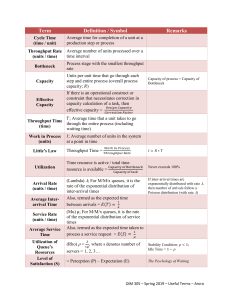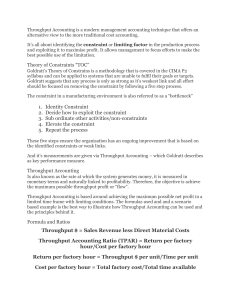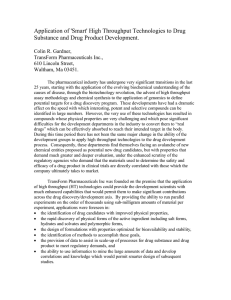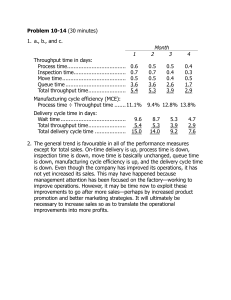The Heart of Theory of Constraints
advertisement
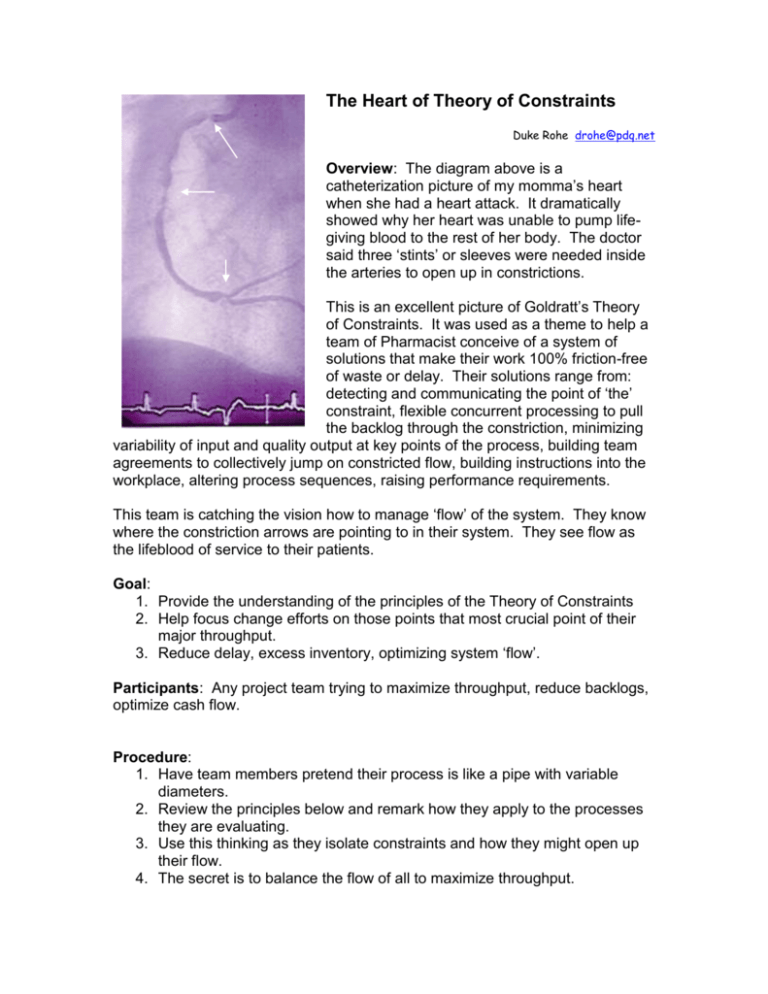
The Heart of Theory of Constraints Duke Rohe drohe@pdq.net Overview: The diagram above is a catheterization picture of my momma’s heart when she had a heart attack. It dramatically showed why her heart was unable to pump lifegiving blood to the rest of her body. The doctor said three ‘stints’ or sleeves were needed inside the arteries to open up in constrictions. This is an excellent picture of Goldratt’s Theory of Constraints. It was used as a theme to help a team of Pharmacist conceive of a system of solutions that make their work 100% friction-free of waste or delay. Their solutions range from: detecting and communicating the point of ‘the’ constraint, flexible concurrent processing to pull the backlog through the constriction, minimizing variability of input and quality output at key points of the process, building team agreements to collectively jump on constricted flow, building instructions into the workplace, altering process sequences, raising performance requirements. This team is catching the vision how to manage ‘flow’ of the system. They know where the constriction arrows are pointing to in their system. They see flow as the lifeblood of service to their patients. Goal: 1. Provide the understanding of the principles of the Theory of Constraints 2. Help focus change efforts on those points that most crucial point of their major throughput. 3. Reduce delay, excess inventory, optimizing system ‘flow’. Participants: Any project team trying to maximize throughput, reduce backlogs, optimize cash flow. Procedure: 1. Have team members pretend their process is like a pipe with variable diameters. 2. Review the principles below and remark how they apply to the processes they are evaluating. 3. Use this thinking as they isolate constraints and how they might open up their flow. 4. The secret is to balance the flow of all to maximize throughput. Theory of Constraint Principles 1. A system is no faster than its smallest bottleneck (constraint). 2. Every system has a constraint. 3. Any effort in improving anything other than ‘the’ constraint is wasteful to the system in that it adds no value to the overall throughput. 4. A system’s throughput is its lifeblood. And it is ultimately measured in dollars; even in service organizations. You maximize throughput, and you maximize the system’s life. 5. Constraints are either system or policy related. 6. When you relieve (open up) one constraint, the bottleneck moves to the next tightest constriction. 7. Many times several constrictions must be opened up for system throughput to be affected dramatically.. Special note: Mom’s stint worked out fine and she said I was shameless for using her ‘cath’ for my tool. Sometimes the a little picture can bring a lot of understanding.

